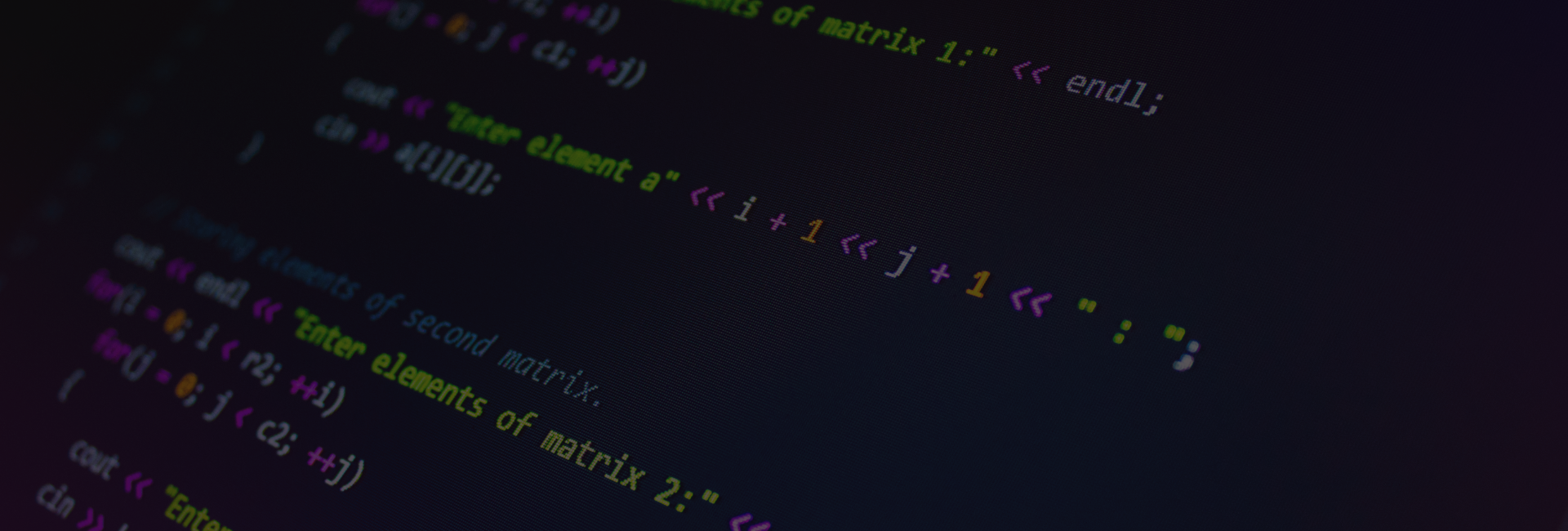Code quality has become more critical than ever as businesses rely increasingly on software products to run operations, reach customers, and accelerate innovation. With nearly 100 million developers worldwide and a growing emphasis on continuous integration and delivery (CI/CD) pipelines, maintaining high code quality has become a top priority for development teams. Research from the Consortium for IT Software Quality (CISQ) reveals that poor-quality software costs businesses over $2 trillion annually in productivity losses, customer dissatisfaction, and technical debt.
To combat these challenges, developers and software development companies are turning to code quality tools—software solutions that help maintain clean, efficient, and error-free codebases. These tools automatically detect bugs, performance bottlenecks, security vulnerabilities, and adherence to best practices, allowing teams to release high-quality products faster. In this blog, we’ll explore the 9 best code quality tools in 2025 that are helping developers ensure their code meets the highest standards.
1. SonarQube
SonarQube remains one of the most widely used code quality tools in 2025, offering continuous inspection of code quality to detect bugs, code smells, and security vulnerabilities across over 27 programming languages. SonarQube integrates seamlessly with CI/CD pipelines, helping development teams deliver cleaner code with every commit.
Key Features:
- Static code analysis for over 27 languages, including Java, Python, JavaScript, C++, and more.
- Real-time feedback on code quality and security vulnerabilities.
- Quality gates to enforce code standards before deployment.
- Detailed dashboards that provide actionable insights for continuous improvement.
Use Case:
NASA’s software team, responsible for the Mars Rover mission, uses SonarQube to ensure that the mission’s software is reliable and free of critical bugs. With such a high-stakes project, maintaining top-tier code quality is essential for the mission’s success. By leveraging SonarQube’s real-time feedback and vulnerability scanning, NASA ensures their software systems are as robust and secure as possible.
2. ESLint
ESLint is a popular open-source linting tool for JavaScript and modern JavaScript frameworks like React, Vue, and Angular. It helps enforce coding standards and prevents potential issues by analyzing code for common errors, style inconsistencies, and anti-patterns.
Key Features:
- Supports custom linting rules and configurations.
- Provides real-time suggestions and fixes for code errors.
- Integrates easily with popular IDEs like Visual Studio Code.
- Actively maintained with support for the latest ECMAScript versions.
Success Story:
LinkedIn, with its extensive front-end codebase, adopted ESLint to maintain coding standards across its React and Node.js applications. ESLint helped the development team identify and fix performance issues, ensuring scalable and maintainable code, even as LinkedIn’s platform scaled to over 875 million users.
3. PVS-Studio
PVS-Studio is a powerful static code analysis tool primarily used for C, C++, C#, and Java. It specializes in detecting potential errors like buffer overflows, race conditions, and uninitialized variables. PVS-Studio excels in finding complex code errors that might not be caught by traditional compilers.
Key Features:
- Detailed reports of code quality and vulnerability findings.
- Cross-platform support for Windows, macOS, and Linux.
- Integration with CI/CD pipelines for automated code analysis.
- Misra C compliance checks, ideal for industries requiring stringent coding standards (automotive, aerospace).
Case Study:
Microsoft employs PVS-Studio for their Azure cloud platform to detect code anomalies and potential security threats across their massive codebase. PVS-Studio helps Microsoft achieve a high level of code quality, reducing bugs and ensuring a seamless, secure user experience for millions of customers.
4. ReSharper
For developers working in the .NET ecosystem, ReSharper is a must-have tool. It offers a rich suite of features, from code refactoring and analysis to unit testing and performance profiling. ReSharper continuously analyzes code for issues, suggesting improvements to enhance performance, maintainability, and readability.
Key Features:
- Intelligent refactoring suggestions that improve code architecture.
- On-the-fly code inspection for detecting potential issues during development.
- Extensive support for C#, VB.NET, ASP.NET, and JavaScript.
- Seamless integration with JetBrains Rider and Visual Studio.
Example:
Stack Overflow, one of the largest developer communities, relies on ReSharper to maintain the quality of its ASP.NET and C# codebases. The tool’s refactoring capabilities have enabled Stack Overflow to continuously improve performance, especially as they scale to handle billions of queries and user interactions each month.
Want to Improve your Code’s Maintainability, Readability, & Performance?
Discover the Top 9 Code Quality Tools to use in 2025
5. Checkmarx
Checkmarx focuses on security-first static code analysis, ensuring that applications are free from common vulnerabilities such as SQL injection, cross-site scripting (XSS), and more. The tool is highly valued in industries with strict security compliance requirements, including finance, healthcare, and government.
Key Features:
- Automated detection of over 150 security vulnerabilities.
- Shift-left security approach, integrating security checks early in the development cycle.
- Supports over 30 programming languages, including Java, Python, PHP, and .NET.
- Scalable for large codebases and enterprise teams.
Success Story:
Barclays Bank adopted Checkmarx to enhance the security of its banking applications. Given the sensitivity of financial transactions, Checkmarx’s security-first approach helped Barclays identify and fix security issues early in the development cycle, ensuring compliance with strict financial regulations and safeguarding customer data.
6. CodeClimate
CodeClimate is a versatile tool that provides automated code review, highlighting issues related to maintainability, complexity, and security. It offers real-time insights into code quality, helping teams stay on top of technical debt and code coverage.
Key Features:
- Maintainability scoring for code quality metrics.
- Support for languages like Ruby, Python, JavaScript, Go, and PHP.
- Test coverage analysis integrated with CI/CD pipelines.
- Reports that prioritize technical debt and code refactoring suggestions.
Example:
Kickstarter adopted CodeClimate to continuously monitor the quality of its Ruby codebase. By integrating CodeClimate into their CI/CD workflow, Kickstarter was able to reduce technical debt and improve code maintainability, ensuring that their platform remains scalable as new features and campaigns are added.
7. Coverity
Coverity, part of Synopsys, is a leading tool for static application security testing (SAST) and code quality analysis. It automatically detects vulnerabilities and defects in C/C++, Java, and other languages.
Key Features:
- Industry-leading support for secure coding standards (e.g., OWASP, CWE).
- Deep static analysis to uncover security issues early in development.
- Integration with CI/CD platforms for automated code scanning.
- Cloud and on-premises deployment options.
Case Study:
SAP relies on Coverity to ensure the quality and security of their ERP software solutions. With thousands of customers depending on their software, Coverity helps SAP identify potential vulnerabilities and quality issues before deployment, reducing the risk of software flaws impacting businesses.
8. FindBugs (SpotBugs)
SpotBugs is the successor to the popular FindBugs tool and is widely used to analyze Java code for potential bugs and defects. It scans bytecode and identifies issues like null pointer dereferences, resource leaks, and concurrency problems.
Key Features:
- Lightweight and easy to integrate into build tools like Maven and Gradle.
- Detects over 400 types of bugs in Java applications.
- Highly customizable with plugin support.
- Continuous integration with Jenkins and Travis CI for automated testing.
Example:
Google integrated FindBugs into its Java development workflow to maintain code quality across its vast array of services. By catching critical bugs early in the development process, FindBugs helped Google enhance the reliability and performance of its core services like Gmail, Google Search, and Google Cloud.
9. PMD
PMD is another popular tool for static code analysis, specializing in detecting problematic patterns and bad practices in Java, JavaScript, and Apex code. PMD focuses on code inefficiencies, unused variables, and redundant code that could be optimized.
Key Features:
- Detects bad coding practices and suggests improvements.
- Integrates easily with CI/CD pipelines.
- Supports multiple programming languages, including Java and JavaScript.
- Customizable with user-defined rules.
Case Study:
Salesforce uses PMD to maintain the quality of its Apex codebase, which powers its cloud-based CRM platform. By identifying bad practices and redundant code early, Salesforce developers can refactor their code, ensuring that their systems remain efficient and scalable even as millions of businesses rely on their platform.
Conclusion
Code quality tools are essential in today’s software development landscape, helping organizations reduce bugs, improve performance, and ensure security. In 2025, tools like SonarQube, ESLint, PVS-Studio, and others continue to lead the charge in making code.
Frequently Asked Questions About Code Quality Tools in 2025
Q1. What is a code quality tool and why is it important in 2025?
A code quality tool automatically analyzes source code to identify bugs, code smells, security issues, and inefficiencies. In 2025, as development cycles shorten and team sizes fluctuate, these tools are essential for maintaining clean, scalable, and secure code, especially across distributed teams and AI-assisted environments.
Q2. How do code quality tools improve development efficiency?
These tools catch issues early, suggest optimizations, enforce consistent coding standards, and reduce technical debt. By integrating into CI/CD pipelines, they help developers spend less time debugging and more time building, speeding up releases without compromising quality.
Q3. Can AI help with code quality?
Absolutely. Modern tools now use AI to auto-fix minor issues, detect complex anti-patterns, and even suggest refactors based on best practices. Tools like DeepSource and Codacy have started integrating AI for intelligent prioritization and actionable feedback.
Q4. How do I integrate code quality tools into my CI/CD pipeline?
Most tools offer out-of-the-box integrations with GitHub Actions, GitLab CI, Bitbucket Pipelines, Jenkins, and other CI tools. Setup typically involves a config file or plugin, and once integrated, they automatically scan code during pull requests or deployments.
Q5. How do I choose the best code quality tool for my team?
Consider your tech stack, team size, workflow, and whether you need static analysis, security scanning, or style enforcement. If you prioritize enterprise security, Snyk Code or Semgrep is a good fit. For general-purpose code health, SonarQube and CodeClimate are solid choices.

